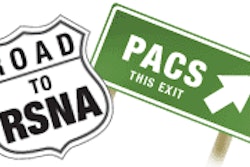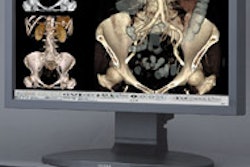PACS networks not only bring efficiency and cost advantages to hospitals, they can keep healthcare workers safe during outbreaks of infectious diseases such as severe acute respiratory syndrome (SARS), according to researchers at Tseung Kwan O Hospital (TKOH) in Hong Kong.
"PACS is also useful for caring (for) highly infectious patients, offering more protection to healthcare workers," said Dr. Carrison Tong from the institution's department of medical physicists. He spoke during a presentation at the 2004 RSNA meeting in Chicago.
Healthcare workers have a particularly high risk of contracting SARS due to its moderately high transmissibility and their close contact with patients and handling of excreta, Tong said.
"Filmless radiology services provided an important tool for the care of SARS patients and protection of healthcare workers," Tong said.
TKOH installed PACS in 1999, featuring a storage capacity of approximately 5 TB (including a 2.3-TB storage-area network setup). DICOM compression is performed on the SAN at a compression rate of 2.5.
The network features no single point of failure and employs a cluster of automatic fail-over switches, Tong said. Image distribution is performed using a cluster of three Web servers; image viewing systems are set up in wards using embedded LCDs, wall-mounted computers, barcode scanners, and smart-card systems. A mobile image viewing trolley is also available during operations.
To handle the SARS epidemic, image viewers were set up in two medical wards: an ICU and a SARS clinic. No film would be printed during the care of SARS patients except when a patient was transferred to another hospital, Tong said.
Seventy SARS patients were received at TKOH, and fewer than 1% of the SARS cases required a special x-ray exam for follow-up, Tong said.
"X-ray image viewing through a computer network was sufficient for radiological diagnosis of SARS patients," he said.
No radiology department staff became infected during the outbreak, and the PACS definitely reduced the spread of the disease, Tong said. PACS also contributed to the ability to continuously monitor patients' responses to drugs, he added.
By Erik L. Ridley
AuntMinnie.com staff writer
January 7, 2005
Related Reading
Nitric oxide helps patients with SARS, November 25, 2004
X-ray signs correlate with SARS diagnosis and outcome, October 1, 2004
SARS screening reveals TB in Taiwanese healthcare workers, April 23, 2004
Mobile CT proves invaluable in SARS outbreak, January 22, 2004
Copyright © 2005 AuntMinnie.com



















